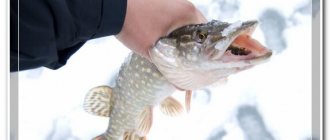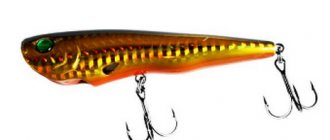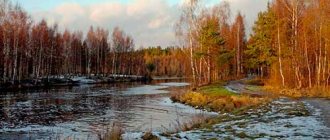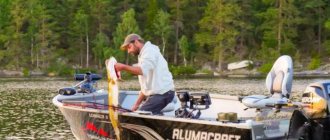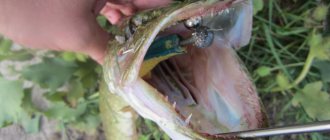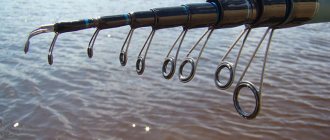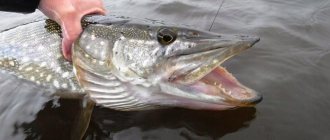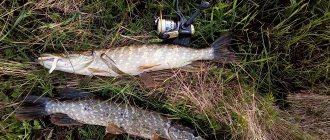Content
- Features of catching pike with a spinning rod in summer
- Selection of baits for pike fishing
- A little lyrics about baits...
- What affects the pike bite
- How weather affects pike activity in summer
- Where to look for pike in summer?
- Pike fishing tactics in summer
- Video: Fishing for pike in summer using a spinning rod from the shore
- Video: Catching pike in summer using a spinning rod from a boat
- What advice do you have for beginners?
Experienced pike fishermen know that the most successful time for fishing for “toothy” is autumn and spring. It is during these periods that the predator eats, when it either eats up before winter or before spawning, with the warming of the water.
However, with the onset of summer, the water becomes too warm, which affects the activity of pike. And there are no problems with food, “prey” for every taste is teeming everywhere, so it becomes difficult to surprise the pike. But we will try to do it! Don’t put off your favorite spinning rod until better times, right? The one who searches and tries will definitely succeed.
Features of catching pike with a spinning rod in summer
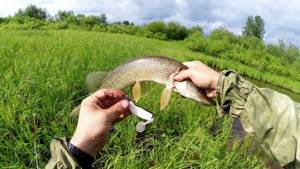
Fishing in early June, when the water has not yet warmed up, can bring good results for pike. But as soon as the temperature rises, the predator abruptly changes its June stops to find itself in more comfortable conditions. And where you caught the “spotted” one in the first days of summer, you can no longer find it in July. In August, especially as it gets colder, the pike changes its location again.
It turns out that pike fishing in the summer can be divided into three periods, during which our fellow hobbyist will have to completely rebuild his strategy and look for other promising places.
Let's talk about all this in more detail and start with gear. What do we need for successful predator fishing?
Selection of baits for pike fishing
In summer, it is worth preparing a full range of spinning baits for pike. You never know what might shoot out. Wobblers, rubber and various spinners work well. For fishing in conditions of abundant vegetation, it is advisable to have spinnerbaits in your fishing chest; they can be classified as classic summer baits, which will allow you to not be afraid of getting hooked. Of course, there is no 100% guarantee, but the risk is still minimal.
Wobblers with different depths can be used. Fishermen speak well of poppers, which attract predators with their “gurgling” sound. Or vice versa, use recessed models. Because when fishing at great depths, “surface fish” are unlikely to reveal their maximum potential.

For spinners, be sure to try spinners and spinners of different sizes. Do reconnaissance at different depths, experiment with wiring. In some places a uniform will work well, in others a classic step, do not forget to use elements of twitching if the type of bait allows it.
And, of course, the good old jig in all its equipment options. Oddly enough, pike can “take” large silicone even in July, despite the peak of passivity due to the water temperature and its bloom. However, there is an opinion that by mid-summer and early August it is necessary to “decrease”. Whether this is true, you can only check by fishing.
Age and size of pike
The size and weight of large pikes are legendary. Leonid Sabaneev mentions the legendary pike caught in 1497 in Germany; the ring of the Holy Roman Emperor Frederick II, marked 1230, was found on the pike. Thus, according to this legend, the fish was 267 years old, weighed 140 kg and had a length of 5.7 meters. The spine of this legendary pike was transferred for safekeeping to the cathedral of the German city of Mannheim. Scientists examined this spine and found that it was just a hoax; the spine was assembled from the vertebrae of several individual pikes.
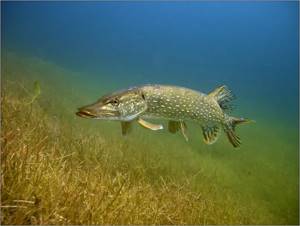
The history of Tsar Boris Fedorovich’s pike is known. Legend has it that in 1794, while cleaning the Tsaritsinsky ponds, a pike with a ring on the gill cover was caught. The inscription “Planted by Tsar Boris Fedorovich” was engraved on the ring. Thus, it turned out that the caught pike was more than 200 years old. This whole story is nothing more than a legend; no documentary evidence of this story has been preserved.
According to legends that have come down to us, pike weighing 56 kg were caught in the Ural lakes, a pike weighing 64 kg was caught in Lake Onega, and a specimen weighing 80 kg was caught in the Vychegda River.
The maximum size of pike reaches, apparently, 1.6 - 1.9 meters, maximum weight 26-35 kg, this is indicated by documented data on the industrial catch of pike.
In order to grow to a weight of 20 kg, a pike must live more than 30 years. It is possible that such huge pikes are still preserved somewhere.
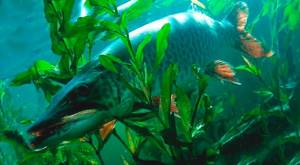
The largest pikes live in wild northern rivers, rarely visited by people; in such places, predators can live to a very old age.
Most often, anglers catch pike with a maximum length of 50 - 70 cm, weighing 1.2 - 3 kg. Pike weighing from 3 to 7 kg are considered large these days. Specimens weighing more than 8 kg are already considered trophy; many fishermen have never managed to catch a fish of this size in their entire lives.
There are legends that pike can live up to 100 years, but these are just legends, the average life expectancy of pike is 18-20 years, under ideal conditions pike can live up to 30 years. But pike, as a rule, do not live to this age, due to catch by fishermen, death in winter from lack of oxygen in the water and freezing of reservoirs to the bottom in especially cold winters.
A little lyrics about baits...
In general, when it comes to fishing tips on lures, you can never say for sure what will be useful to you. And if someone advises taking a specific model in an article on the Internet, like: “Top 10 catchable lures for pike in the summer,” most likely they are pursuing some kind of marketing goal, with a 90% probability.
But there are exceptions... I remember it happened on one of the summer fishing trips. Before the training camp, I received advice from a friend: “Take this lure, it works!” Although the attitude towards all this was skeptical, the bait still ended up in the box. And in the end it turned out that she received the bulk of the bites. When changing to another piece of hardware, the bite died down. Coincidence? Don't think.
And the moral of this story is that such advice can only be useful if you received it from a trusted source. Will they work 100%? No, of course there is no such guarantee.
And in principle, from personal experience it was noticed that during the summer you really need to have a whole arsenal in reserve. It happens that the bite is good and when scouting with a wobbler, “blows” immediately occur. But it happens the other way around, when you have to try everything, walk 3 - 5 kilometers, and only then find your fish.
This is probably all there is to it – summer pike fishing. Unrestrained experiments, constant search and change of fishing techniques. And a serious approach to reconnaissance, not only of places and baits, but also of the time of fish activity in a given month. The more factors you take control of, the higher your likelihood of achieving consistency in catching any fish at any time of the year.
The best lures and baits
The choice largely depends on the time of year and conditions. Let's look at different options. Pike almost always willingly take the bait. Perch, roach, bleak, gudgeon and other small fish, preferably live, are suitable as live bait. The predator is not very fond of the dead fish and bites on it reluctantly. It is better to hook it behind the back, under the fin, carefully so as not to damage the spine, but so that the tee (double) penetrates the muscles and does not stick to one skin. The rest of the treat offered by the fisherman consists mainly of spoons and other imitators of live prey: frogs, mice and various fish. Don’t forget about twisters and other types of silicone baits; an experienced fisherman has quite a large number of them.
Pike readily takes red baits, but in cloudy weather it can switch to light ones - yellow, white. They should also vary in size - today medium ones will help, and in the next days small ones will help.
To learn more:
The best colors of spinners for pike fishing
What affects the pike bite
Here is another interesting topic around which many myths and disputes have arisen. Fishing groups often ask the question “When does pike bite in the summer?”, and the answers to it are sometimes funnier than the jokes in “Smehopanorama”.
What do people want to hear, really... That the predator's exit will be at 4:57 am, on a red twister and you need to throw it over your left shoulder? All this is impossible to predict. Sometimes you wait for the “exit” from 5 to 6 in the morning, but it starts at 11. And this happens quite often. There is also such a thing as “predator bite forecast - summer 2018”, here they will tell you exactly when you need to go fishing to catch a trophy.
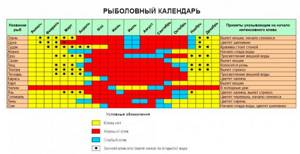
Of course, there are various factors that are determined by the experience of fishermen, but even these cannot be relied upon exactly. These are rather guidelines that you should pay attention to. But at the same time, you need to remember that the pike may not know that it should not bite today due to the incomplete phase of the moon.
What does pike eat?
Pike is a predatory fish that feeds on a wide variety of animal foods. The basis of the pike diet is all kinds of fish. Already, pike fry, whose size barely reaches 1.5 cm and the basis of their diet is zooplankton, are trying to hunt the larvae of various small fish. Having reached a size of 5 cm, pike completely switch to feeding on fish.
Pike are not particularly picky about their diet; they eat whatever they can catch. Among the fish, pike prefer: crucian carp, roach, bream, silver bream, perch, goby, whitefish, bream, roach, ruffe, gudgeon, char, and minnow.
You may be interested in: Zander baits
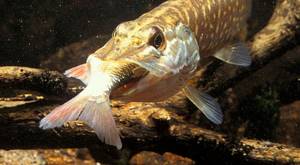
Pike treats ruffs, perches and pike perch with caution, which have sharp fins and can injure the pike with them. Pike does not really like burbot and tench because of their unpleasant mucus. Having caught a ruff or perch, the pike squeezes it with its jaws for a long time until it feels that its victim has completely stopped resisting and only then swallows it.
Pike often eat other pike if they are smaller in size. Anglers often catch large pike weighing up to 4 kg, with lacerations on their sides. Such wounds indicate that there are even larger pikes in the reservoir, and the caught pike became a victim of their attack. A pike weighing 15 kg, which is 20-25 years old, can eat another pike weighing 8 kg.
In spring and the first half of summer, pike happily eat frogs and molting crayfish. In autumn, during migration, various rodents (mice, rats and squirrels) swim across rivers and often become prey for large pikes. A large pike can grab and drag a duckling, and sometimes even an adult duck, under water, especially during molting, when the duck has difficulty rising into the air. Cases are mentioned when pikes even grabbed geese.
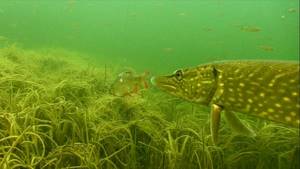
The gluttony of the pike is evidenced by the fact that it is able to swallow food reaching a size of 50-65% of its own weight and size.
Having caught the prey, the pike turns it head first and then swallows it; if the pike cannot swallow its prey completely, it waits until the swallowed part of the prey is digested and then swallows the rest of the prey.
Food in the stomach of pikes is digested very slowly, which is why pikes are so voracious, they have to fill their digestive tract completely to capacity. The pike regurgitates scales and other solid undigested food debris.
Pike feed irregularly; after eating, the pike can digest food for several days and not hunt during this entire time.
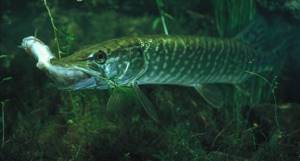
The time when pike are actively feeding is commonly called zhor by fishermen. There are three periods of pike feeding: pre-spawning feeding occurs in early spring, post-spawning feeding occurs in April-May, and autumn feeding occurs in the fall with cooling temperatures.
The time of active feeding can be determined by the behavior of the pike. During zhora, the pike often jumps out of the water and starts a fry fight, during which the fry jumps out of the water in different directions. It happens that, carried away by the pursuit of a fry, a pike even jumps out onto the shore during a feast.
How weather affects pike activity in summer
Whether it is scientifically proven or not, the predator really loves bad weather, which, to put it mildly, makes it difficult to sunbathe. It may be a cool day, partly cloudy, with light rain and light wind. At least that's what is believed.
It is also worth noting that before a thunderstorm, the pike becomes more active and begins to eat with appetite. This means that the “toothed one” reacts to atmospheric pressure and wakes up when it decreases or becomes stable. However, when you increase it, you get a completely opposite effect - the pike suddenly stops loving your bait, including its natural diet.
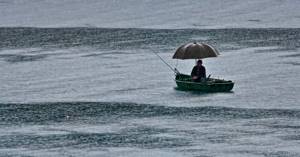
As for the time of release of the predator, it is impossible to say about all reservoirs at once. It’s different everywhere, so it can only be determined most accurately empirically. That is, with your own intelligence or find out from local fishermen who has such data.
However, it is still worth paying attention to the dawn and evening hours, when the sun has already stopped burning. They say that at night you can also count on a catch, but this is rather an exception to the rule.
There is another interesting hypothesis that weather-sensitive people can test from personal experience. Listen to your state before fishing, if you are cheerful and ready for exploits, after a cup of coffee, of course, then perhaps the predator will be active that day. And on the contrary, feeling lethargic, you can’t count on a good bite. Magnetic storms, everything...
All this, of course, is good, but let's better talk about more real things, such as scouting pike places from the shore and from a boat.
Where to look for pike in summer?
For more successful fishing for pike, and basically any other fish, it is advisable to have a boat. Only then will all promising places truly open up to you. When fishing from the shore, the fisherman is often limited by the casting range or the inability to get to a good place due to the terrain. But on a boat it’s a completely different matter. Especially in July and until mid-August, when the fish move away from shallow water and strive to find a deeper and shady place.
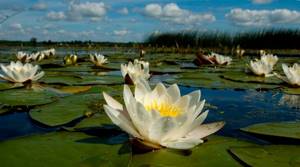
And since we started talking about promising places, let's list the main ones:
- Snags and bushes that are underwater or visible on the surface. Trees hanging over the water, thereby creating shade;
- Various unevenness in the bottom topography, sharp changes from depth to shallow, upper and lower edges;
- Along the walls of reeds or other vegetation. In the “windows” between the grass, in the creeks;
- On the “return paths” or in places where there is a pocket entering from a fast current, where the water flow is much weaker, river turns and steep banks;
- In places where water bodies narrow. This is especially true when it’s hot in July and the fish are looking for places where it’s cooler and has more oxygen;
- It is effective to work over water lilies and other vegetation with surface baits, provided the depth is shallow. The pike is unlikely to resist and will most likely attack the bait. Once vegetation appears on the surface, you can try “no-hook” or spinnerbaits if possible;
- In shallow water, in June, with cool water, while the fry feeds in such zones, pike also operate there;
All of the listed places are the most popular for pike sites. Of course, there are exceptions and sometimes a predator is caught where you don’t expect a bite at all.
Appearance
Pike body
The pike has a torpedo-shaped elongated body, with fins shifted towards the tail. The whole appearance of the pike speaks of its ability to develop high speed with lightning speed.
Pike fins have a rounded shape, their whole appearance speaks of the excellent hydrodynamic properties of the pike. A long body with large dorsal and anal fins and a muscular tail give the pike the ability to move quickly. True, it can only pursue its prey in short bursts.
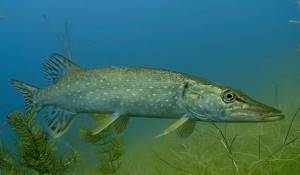
The pike has a large, elongated head, a wide mouth, and the lower jaw protrudes slightly forward.
The pike's snout is wide and elongated, somewhat reminiscent of the muzzle of a crocodile. The pike's mouth has a large gripping area; the gill membranes are separated from each other, allowing the pike to open its mouth very wide. Thanks to this, the pike can swallow food of large sizes, up to 2/3 of its own length. Fishermen know this feature of pike, so they often use large baits when fishing for pike.
The entire body of the pike is covered with small scales closely adjacent to each other, which form a dense monolithic cover that reliably protects the body of the pike from the teeth of other pikes.
Body coloring
Pike differ greatly from each other in color. The color can be very different and depends on the age of the pike, the aquatic environment, food supply and other environmental conditions.
The main color of pike scales is gray-green; spots of different shades from yellowish and olive to brown are scattered on a gray background. The spots form transverse stripes on the sides of the pike. The back of the pike is dark, the belly is light yellow or grayish-white.
The coloring of pike has an important camouflage function. A camouflage pattern of transverse stripes and spots scattered throughout the pike’s body makes the pike invisible in the pond. The camouflage pattern on the pike’s body is especially effective in areas with dense vegetation and snags.
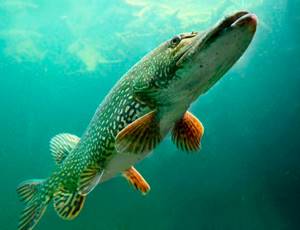
The color depends on the age of the pike: young pikes have a lighter color, adults have a darker body color.
The color of pikes greatly depends on their habitat. Pike living in peat and silted reservoirs have a dark body color. Pike living in reservoirs with clear water and a sandy bottom are light in color. Pike living among underwater vegetation, the so-called grass fish, have a greenish body color.
The paired fins of pike are orange or red, the unpaired fins are yellowish-brown, brown or gray with light streaks and stripes.
Females and males of pike do not differ in body color. The female differs from the male in the larger size and shape of the urogenital opening. The urogenital opening of a female pike is an oval depression surrounded by a pink ridge, and in males it looks like a narrow oblong slit.
Mouth, vision, sense organs
The pike has good eyesight, its wedge-shaped snout is designed in such a way that the high-set eyes of the pike allow it to see very well what is in front of it, above it, on the sides of it and even just below it if the object is slightly ahead.
The wide mouth prevents the pike from seeing objects that are below it at a close distance.

Pike have binocular vision and can well determine the distance to moving objects and the speed of their movement. Scientists' experiments show that pike can distinguish more than 20 color shades.
Pike has a well-developed olfactory apparatus, thanks to which at certain periods it can feed on carrion from the bottom of the reservoir.
The pike has a well-developed lateral line organ. Thanks to this organ, pike can hunt even in muddy water and detect the source of the slightest fluctuations in water from a great distance.
Experiments show that even a completely blind pike can successfully obtain food for many years, precisely thanks to the lateral line organ.
Predator teeth and their replacement
The pike's huge mouth is lined with sharp teeth. All pike teeth are not used for chewing food, but for capturing and killing prey. Some of the teeth are located on the jaws; they look like sharp fangs of different sizes, located at some distance from each other.
In addition to the fangs, on the jaws, palate, tongue and cheeks of the pike there are bristle teeth that resemble the bristles of a toothbrush in appearance. The bristle teeth are directed with their sharp ends towards the pharynx and in the normal state are immersed in the mucous membrane. These teeth help the pike hold on and make it easier to swallow prey. When the prey tries to escape from the mouth, the bristle teeth rest against it with their tips and do not allow it to slip out, pushing the prey further into the throat.
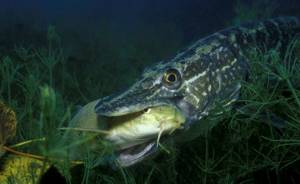
There is a legend among fishermen that after spawning and during the full moon, the pike’s teeth change and because of this it stops feeding and is not caught at this time.
In fact, the change of teeth in pike is a continuous process that occurs constantly throughout the life of the pike. The change of teeth in pike has no connection with spawning and the full moon. The passivity of pike and the lack of biting is not associated with a change of teeth, but is explained by a loss of strength due to spawning.
Each tooth in the lower jaw of a pike is adjacent to 2-4 replacement teeth, which are hidden under the soft tissue of the inner surface of the jaw. The active tooth and its replacement teeth together form a dental family. When a pike's working tooth goes out of use, its place is taken by a replacement tooth; at first it is soft and not very stable, but then its base grows to the pike's jaw and becomes strong.
You may be interested in: Okuma Inspira ISX Reel
The change of teeth does not occur simultaneously in pike. If you examine the teeth of a caught pike, you will see old, dissolving teeth, strong working teeth, and new, still mobile, young teeth.
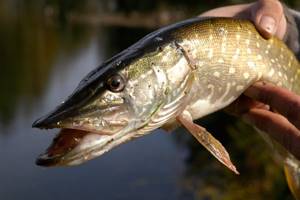
The sharp teeth of a pike can cause a lot of trouble for inexperienced fishermen who have not yet learned how to properly handle the caught fish. Even a scratch from the small teeth of a small pike is very painful and does not heal for a long time. In addition to the teeth, the sharp edges of the pike's gill covers, which can easily cut oneself, pose a danger to the fisherman.
You need to remove the caught pike from the water with a special landing net. Before handling a pike, it is advisable to wear gloves with a protective coating. To remove the bait from the pike's mouth, its mouth is securely fixed with a gaper, and the bait itself is removed with an extractor, while the pike's head is carefully held with one hand under the gills, pressing it against a hard surface.
Pike fishing tactics in summer
We've walked through the main pike sites and now we need to catch them! Beginner fishermen often make one common mistake. They come to the river, find one promising place and try to catch something for several hours. It may make sense under certain conditions, but in most cases you have to look for it.
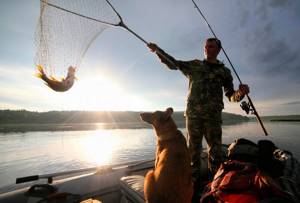
Unfortunately, there are not many morning hours, so you need to appreciate every minute. We arrived at the location and carried out reconnaissance for 5-10 minutes using various baits. Didn't take the bait? Go ahead.
Even if after a successful bite there is a long lull, this is a reason to change the place. However, it makes sense to return to it later, because since there was a pike here, it is quite possible that another one will come too.
You shouldn’t get hung up on one bait either. If you have already checked several good places and to no avail, you need to take a more serious approach to the issue of selecting gear. And if there are bites, but they are sluggish, try changing the type of retrieve: uniform, stop and go at different intervals, step, add elements of twitching, increase or decrease the pause, maybe you need to play on the spot.
It is impossible to give precise advice here, there are many options, and the fishing conditions you find yourself in are specific. You need to adapt to them. The main thing is to analyze the actions and monitor the reaction of the fish. Draw conclusions in time and the result will not be long in coming. Yes, you yourself know that fishing is not the easiest hobby.
Reproduction
Female pike begin to participate in reproduction from the age of 3-4 years, the body length of pike at this age is 35-40 cm, males participate in reproduction from the age of 5 years.
Pike is the very first freshwater fish to spawn; spawning begins in March immediately after the ice melts. The peak of spawning occurs during high water, when the water temperature is 3–6 degrees. In lakes and reservoirs, spawning occurs somewhat later, since the ice cover remains on them longer.
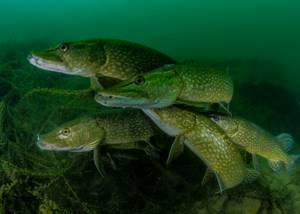
During spawning, pike goes aground and enters the mouths of small rivers and streams, lakes and water meadows. The depth of the water where spawning occurs is usually 0.5-1 meter. For spawning, pike choose places with a quiet current. Smaller pikes begin spawning, and the largest ones finish. Pike spawning can last up to 4 weeks. During spawning, pikes stay in groups, usually 2-4 males stay around one female; large females can keep up to 8 males.
During spawning, the female pike swims in front, and the males swim behind her, slightly behind her. Males either cling to the sides or stay above the back of the female. During spawning, the dorsal fins and backs of fish are constantly visible above the water. Constantly moving around the spawning area, pikes rub against bushes, roots, stems of reeds and cattails. Females lay eggs, and males fertilize them with their milk. As soon as the spawning is over, the pikes rush in different directions, making a loud splash, and the females often even jump out of the water.
You may be interested in: Grayling
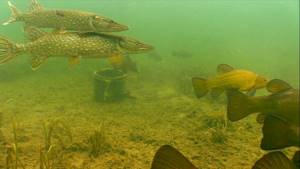
One female pike lays from 17.5 to 215 thousand eggs, the number of eggs in a female depends on her age and size. For example, a pike weighing 2.5 kg is capable of producing 136 thousand eggs. The pike egg has a diameter of about 3 mm. The eggs are sticky, due to which they attach to grass, algae and other underwater vegetation.
If after the spawning of pike there is a rapid decline in water, then most of the eggs dry out and die.
After 2-3 days, the stickiness of the eggs disappears and they fall to the bottom, where a larva, 6.7-7.6 mm long, develops from it within 8-14 days. The rate of development of the larvae from the eggs depends on the temperature of the water in the reservoir.
As the bubble dissolves, pike larvae begin to feed on zooplankton, small crustaceans and begin to grow rapidly. The pike larva, with a length of only 12-15 mm, is already beginning to prey on the larvae of carp fish. Spawning of carp fish occurs much later than the spawning of pike; cyprinid larvae become food for young pike.
Pike fry begin to eat insects, worms, eggs and fish larvae, and having reached a length of 5 cm, they begin to hunt and completely switch to feeding on small fish.
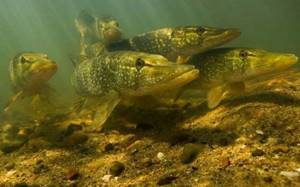
Pike fry often become prey for other predatory fish, birds and animals. Adult pike and pike perch happily eat small pike perch. Among the birds there are ducks and seagulls, and among the animals the muskrat is also not averse to feasting on small bee-eaters.
Pike fry grow quite quickly, being born in April-May, by autumn they grow up to 15 cm and weigh about 100 grams. The growth of pike fry depends on the availability of food supply. In reservoirs with a rich food supply, pike at the age of 1 year reaches a length of 30 cm, and a pike at the age of 2 years reaches a length of 40 cm and weighs about 1 kg. The older the pike gets, the slower it grows in length, but the faster it gains weight. Pike at the age of 5 years gains only 2 cm in length per year.
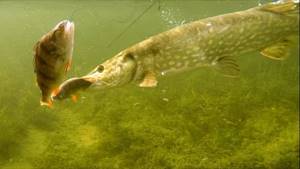
It happens that pikes enter flood lakes in the spring, after a while the water subsides, the connection between the lake and large water is interrupted and the pikes find themselves locked in such a reservoir. In such a locked reservoir, pike experience a lack of food resources, the growth of pike here is very uneven, pike of the same age differ in length by 2 - 2.5 times.
In such a reservoir, pike fry feed on zooplankton, larger pikes feed on pike fry, and the largest pikes feed on medium-sized pikes. Reservoirs of this type are often found in Yakutia and Canada.
Video: Fishing for pike in summer using a spinning rod from the shore
To consolidate the knowledge gained, let's watch this video. The author catches pike from the shore on an unfamiliar river and gives practical advice on the technique and tactics of searching for “toothy”.
He also tells you what equipment can be useful when fishing. By the way, take this point seriously. Don't neglect the yawner and wire cutters, sometimes they can save you a lot of time. And for the pike itself, this method of removing the hook will be safer if you want to release it back.
